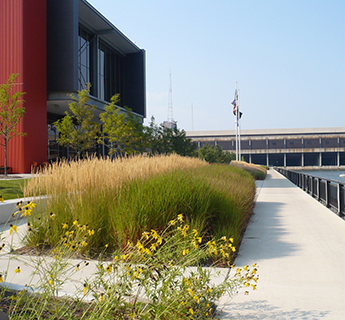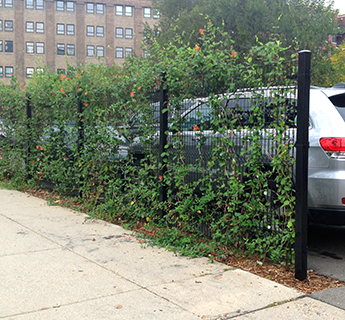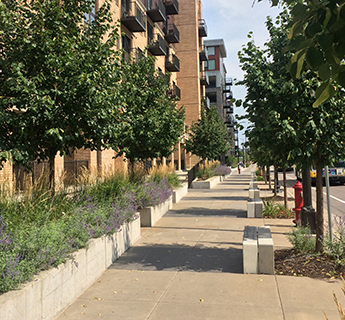POLICY 13
Landscaping: Require landscaping in conjunction with new development that complements its surroundings and enhances the built environment.



A well-designed landscape will create and define spaces while softening the built environment. Landscaping provides beauty and visual interest, shade and environmental benefits, as well as screening and buffering of uses. It is important to consider the impact different types of plants and trees have on their surrounding environment, including their resilience to climate fluctuations, and their ability to be properly maintained.
 ACTION STEPS
ACTION STEPS
The City will seek to accomplish the following action steps to require landscaping in conjunction with new development that complements its surroundings and enhances the built environment.
- Encourage larger, well-placed, contiguous planting areas that create and define public and private spaces, and acknowledge the roles smaller, disconnected areas can play in supporting diverse ecologies.
- Encourage plant and tree types that complement the surrounding area, including a variety of species throughout the site, and seasonal interest. Species should be climate resilient, indigenous, or proven adaptable to the local climate and should not be invasive on native species.
- Promote landscaped areas that include plant and tree types that address ecological function, including the interception and filtration of stormwater, reduction of the urban heat island effect, and preservation and restoration of natural amenities.
- Require the maintenance of landscaped areas in accordance with Crime Prevention through Environmental Design (CPTED) principles, to allow views into and out of the site, to preserve view corridors and to maintain sight lines at vehicular and pedestrian intersections.
- Encourage landscaping plans that facilitate future maintenance including those that minimize the need for irrigation systems, utilize drought and salt-resistant species, and consider ongoing performance of storm water treatment practices, snow storage, access to sun, proximity to buildings, paved surfaces and overhead utilities.
- Encourage and identify opportunities to integrate green roofs, living walls, and porous pavement into development, acknowledging that these practices are not meant to be a substitute for ground-level landscaping of sites as landscaping provides both a natural amenity and aesthetic beauty to the urban landscape.
- Encourage boulevard landscaping and improvements, in accordance with applicable City policies and regulations.
- Increase use of green infrastructure to enhance the attractiveness of the public realm and positively impact storm water management.
- Enforce maintenance of required landscaping.
- Encourage native and pollinator-friendly species in landscaping.
- Encourage the regulation of, and education around, the use of pesticides and chemical compounds on privately owned land.

